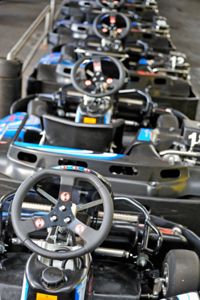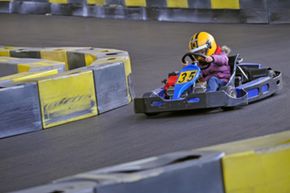Sometime around the early spring season, hardware stores like to show off their go-karts in outdoor displays. These go-karts look fun, and often are, but if your idea of kart racing stems from this picture of a go-kart in front of a hardware store, you're in for a sweet surprise.
Kart racing -- take note of the missing prefix -- involves karts that are much more refined, faster and designed for serious competitive racing. In other words, if you want to ride around in your yard then go with the go-karts at the hardware store, but if you want to start a career in competitive racing, then take a look at the karts you can't find at The Home Depot. In fact, some competitive karts can go faster than 100 miles per hour (160.9 kilometers per hour) and karting is often the inlet for further competitive motor-sport racing.
Advertisement
Karting became popular in the United States in the 1950s when Art Ingels built the first kart in 1956. One year later, the International Kart Federation had published official rules and regulations for the sport. Many of the organizations that both organize and report on karting have been around for several decades. Kart racing can begin as early as age 5, with official competitive racing beginning at age 8 [source: World Kart Association].
Since the 1950s, karting has grown into a national motor-sport, with the World Karting Association boasting more than 10,000 members and over 100 tracks in the United States [source: World Kart Association]. Not only is karting a fun way to get into motor-sports, but many racing icons like Jeff Gordon and Danica Patrick have kicked off their professional racing careers with karting.
On the next page, we'll find out the different types of karts used in competitive racing.
Advertisement





